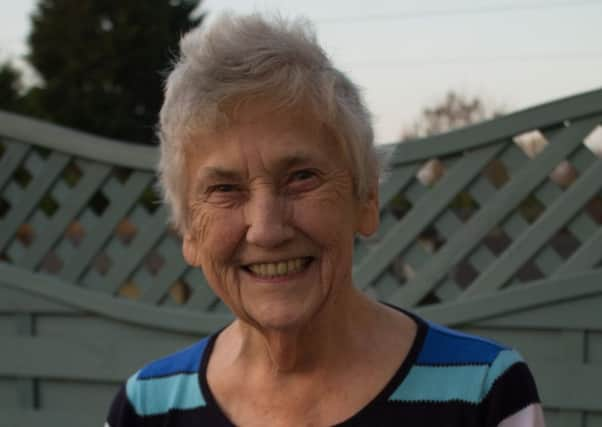Obituary: Dale Greig, Pioneering Scottish ultra distance runner, founder member of the SWCCU


Dale Greig, who has died aged 81, was a pioneering Scottish ultra distance runner, holder of the world best time for the womens’ marathon set in 1964 and the first to be officially recognised by the global governing body, the International Amateur Athletics Federation.
In contrast to the lucrative careers enjoyed by her successors in elite full time female distance running such as Liz McColgan and Paula Radcliffe, her part time efforts did not win her a penny but afforded her lots of fun and satisfaction. Prizes like cutlery sets, table lamps and sewing baskets were the tangible rewards for her success but she was instrumental in paving the way for the acceptance of, recognition for and development of womens’ ultra distance running.
Advertisement
Hide AdAdvertisement
Hide AdOfficially women were not allowed to compete over long distance far less marathons, having been discouraged for years due to the prevailing thinking that it was dangerous for their health although a small number with Ms. Greig in the vanguard had been challenging the authorities to relax the restrictions.
Indeed when she ran her world best time she was not permitted to enter the race officially and instead had to set off ahead of her all male rivals.
However she did not consider herself as a champion of womens’ rights in this, instead explaining in an interview 20 years ago,” I just ran for fun and I don’t regret that at all. I really enjoyed it out in the country in the fresh air. Today women are racing these distances, running really fast. I must say I admire them.”
Well known Scottish athlete over track, country and road, the late Emmet Farrell wrote in his memoir, “Lady runners owe their liberation to people like Dale Greig from Paisley, one of the first to demonstrate that it was not abnormal for women to run long distances.”
Her world best of 3 hrs 27ms 45 secs was set during the Isle of Wight marathon on 23 May 1964, the only female participant and her debut at marathon running. She had gone there for a holiday and to run the race.
Over what was described as ‘a tough, hilly course,’ she became the first woman to dip below 3hrs 30 mins for the event, the previous best being 3hrs 37 mins, attributed to American athlete Mary Lepper in the USA.
Such was the concern for her that she was followed all the way round by an ambulance and by her mother Ann in her car. As she was not permitted to be an official competitor, she had to set off four minutes ahead of the male runners, expecting to be passed by them going up the first hill.
That did not materialise and although overtaken later by many of her rivals she remarked later, “ I caught some towards the end as they began to wane in the last few miles.” None the worse for her experience, she danced the night away in the Royal York Hotel in Ryde before rising early the next morning for a swim prior to her return trip north.
Advertisement
Hide AdAdvertisement
Hide AdAfterwards the organisers were reprimanded by the regional athletic authority for having allowed a woman to run! Although her mark was beaten a few months later by New Zealand athlete Mildred Sampson, she retained the British record for 11 years.
Other notable achievements included in 1971 being the first woman to complete the Isle of Man 40-mile race over the famous TT course as well as the punishing race up and down Ben Nevis, and in 1972, the London-Brighton 55 miles road race.
Again this was an event in which she was not allowed to compete officially and had to set off from Westminster Bridge an hour ahead of the men at 6am, equipped with a map in case she lost her way and completing the course in an excellent 8½ hours.
In 1974 she won the inaugural world womens’ veterans’ marathon in Paris, the first time men and women had been allowed to run together over the distance.
Dale Sheldon Greig was born in Paisley where she was brought up with her twin sister Cynthia and lived all her life. At school she showed promise as a sprinter while in 1956 she won the Scottish Universities’ quarter mile title and was runner up in the Scottish womens’ half mile championship.
Inspired by the career of Arthur Newton, she began to focus on distance running, enjoying particular success at cross country in which she made her international debut against England in 1957 at Musselburgh Racecourse. Between then and 1968 she won the Scottish cross country title four times while on the track she won three bronze medals in the mile at the Scottish championships. Initially she competed for Bellahouston Harriers before setting up her own club in Paisley, Tannahill Harriers.
She was a founder member of the Scottish Womens’ Cross Country Union which she served as Secretary and then Treasurer for many years as well as being a race organiser.
A swimming pool accident in the early 1980s in which she injured her feet led to her reluctantly having to stop running in 1987 although she maintained her interest in the sport. She also wrote a column in the 1950s and 60s for the magazine,The Scots Athlete, which she called ‘Dale’s Diary’ in a nod to a popular radio programme of the time.
Advertisement
Hide AdAdvertisement
Hide AdLast year she was honoured by being inducted into Scottish Athletics’ Hall of Fame. As someone who never sought the limelight, her achievements have tended to be overlooked somewhat but merit a much higher profile.
JACK DAVIDSON